Engineers Gathered Early Aurora Borealis Statistics Still Used by Scientists Today
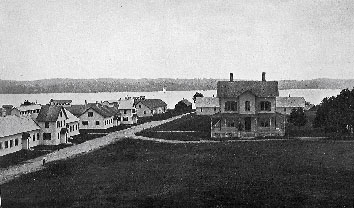 |
| Barracks and bachelor officers' quarters at Willets Point, N.Y. |
While exploring and surveying the American West in the 19th century, Army engineers and topographers amassed a wealth of scientific information. Their concerns included archeology, astronomy, botany, biology, and meteorology. Little known are a series of astronomical observations made by engineer officers undergoing training at the Engineer School of Application at Willets Point (now Fort Totten, Bay Side, Queens), New York, in the 1870s and 1880s.
The engineers made the bulk of their studies from an observatory constructed on the post in 1868. The new observatory, boasting telescopes, transits, chronometers, and chronographs, opened in September 1879. There officers calculated longitude and latitude using the sun, moon, stars, and planets. In the course of their training exercises, which supplemented classroom work, the students had the opportunity to observe and record unusual phenomena. Such was the case in a series of systematic field observations of the aurora borealis begun in February 1870 and continued through 1884.
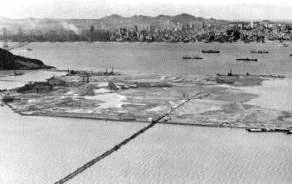 |
|
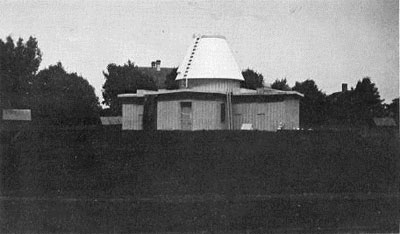 |
| Yerba Buena Island in San Francisco Bay |
|
Field astronomical observatory, Willets Point |
The engineers made the auroral observations purposely in an effort to determine the relationship between auroral displays and the frequency of sunspots and magnetic disturbances. Sentinels from the engineer battalion on duty from sunset to sunrise at three guard posts recorded all visual sightings, noting whether skies were clear or cloudy. To account for human error, especially for the difficulty of identifying fainter displays, the battalion compiled tables noting the three independent observations, calculating a mean average and estimating the number of displays that might have occurred on cloudy nights. Officers stationed at the engineer supply depots at Washington Barracks, Missouri, and at Yerba Buena Island in San Francisco Bay, California, also made their own less detailed observations, which, in turn, were compared with those at Willets Point.
While records of sunspot activity were not kept systematically, the battalion commander concluded from data available that the years of maximum and minimum sunspot activity corresponded with maximum and minimum auroral displays. The auroral statistics collected at Willets Point are the earliest available and today continue to be useful to scientists studying the recurrence of the aurora borealis and its relationship to sunspot activity.
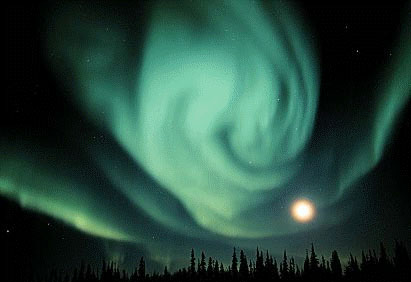
Present-day aurora borealis images taken in Circle, Alaska, 48 miles south of the
Arctic Circle. Note the soaring Hale Bopp Comet (below), visible in March 1997.
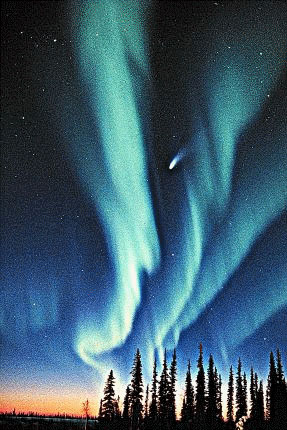
Aurora borealis photo credits:
Special thanks to Dick Hutchinson for his spectacular photos.
For more visit: http://www.ptialaska.net/~hutch/aurora.html
* * *
April 2002